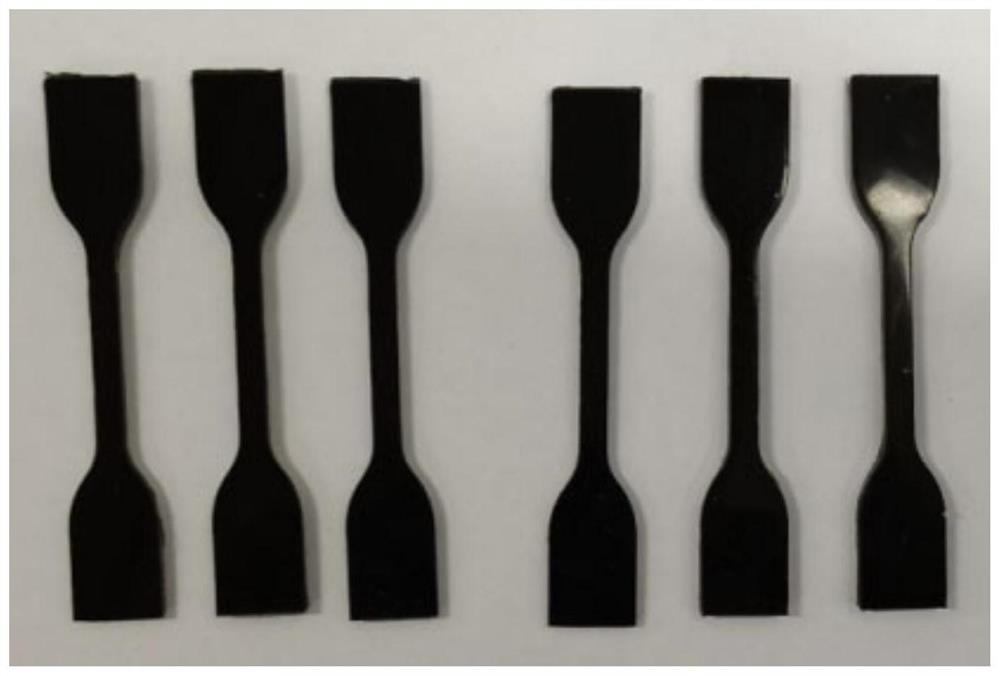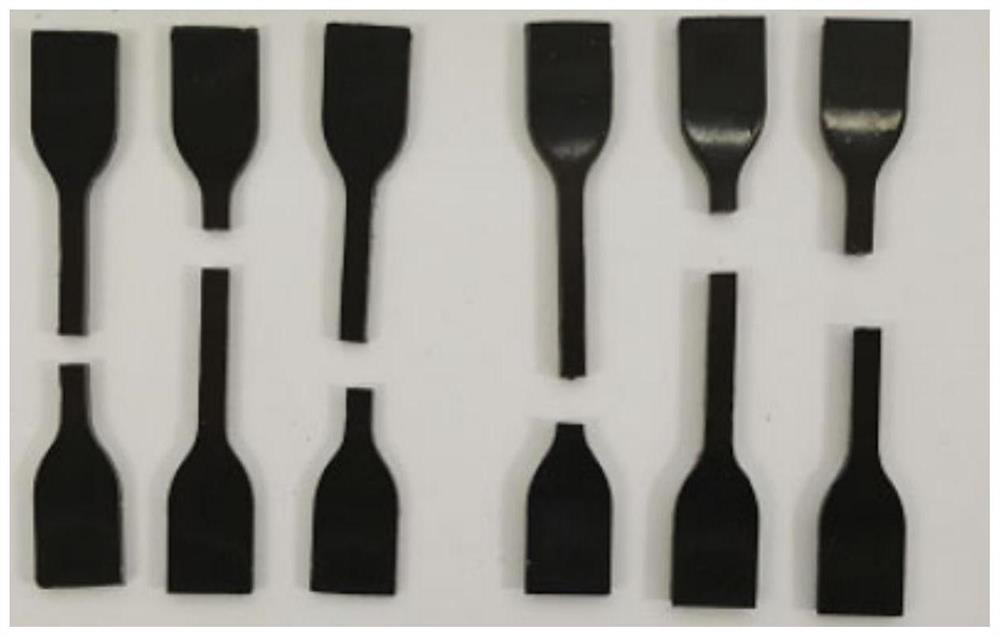Preparation method of polyurethane elastomer for steel rail energy consumption piece, polyurethane elastomer and energy consumption part
A technology of polyurethane elastomer and polyurethane prepolymer is used in energy-consuming parts, the preparation of polyurethane elastomers, and the fields of polyurethane elastomers to achieve the advantages of improving vibration and noise reduction performance, good energy storage and energy consumption performance, and improving production efficiency. Effect
- Summary
- Abstract
- Description
- Claims
- Application Information
AI Technical Summary
Method used
Image
Examples
Embodiment 1
[0032] The preparation of embodiment 1-polyurethane elastomer
[0033] 82 parts by weight of polyoxyethylene ether polyol (functionality 2-3, average molecular weight 1000-2000) are vacuum dehydrated at 100°C until the water content is less than 0.05%. Then lower the temperature to 35°C, stir and add 28 parts by weight of MDI-50. Raise the temperature to 80° C., react for 2 hours, take a sample to detect NCO%, and the NCO% is 12.0%. Post defoaming cooling afterward, obtains polyurethane prepolymer (component A);
[0034] 140 parts by weight of polyether polyol (functionality 2-3, average molecular weight is 1500), 0.3 parts by weight of catalyst dibutyltin dilaurate, 0.7 parts by weight of chain extender MOCA, 100 parts by weight of talcum powder (filler), 0.4 parts by weight Stir parts by weight of antioxidant 1010, 0.4 parts by weight of UV absorber 328 and 0.5 parts by weight of carbon black in a reactor, vacuum dehydrate at 100°C until the water content is <0.05%, and co...
Embodiment 2
[0036] The preparation of embodiment 2-polyurethane elastomer
[0037] 87 parts by weight of polyoxyethylene ether polyol (functionality 2-3, average molecular weight 1000-2000) were vacuum dehydrated at 110°C until the water content was less than 0.05%. Then lower the temperature to 40°C, stir and add 24 parts by weight of MDI-50. The temperature was raised to 80° C., and the reaction was carried out for 2.5 hours. The NCO% was detected by sampling, and the NCO% was 16.0%. Post defoaming cooling afterward, obtains polyurethane prepolymer (component A);
[0038] 150 parts by weight of polyether polyol (functionality 2-3, average molecular weight is 4000), 0.7 parts by weight of catalyst dibutyltin dilaurate, 0.9 parts by weight of chain extender MOCA, 110 parts by weight of talcum powder (filler), 0.7 parts by weight Stir parts by weight of antioxidant 1010, 0.8 parts by weight of UV absorber 328 and 0.7 parts by weight of carbon black in a reactor, vacuum dehydrate at 100°C...
Embodiment 3
[0040] The performance test of embodiment 3-polyurethane elastomer
[0041] According to the corresponding test standards, the test specimens were prepared by using a standard cutting knife (see attached figure 2 ), the hardness, density, tensile properties and loss factor (DMA thermal analysis method) of the material were tested according to the test standard. The test results are shown in Table 1.
[0042]
[0043] Experimental results show that the product of the present invention fully complies with the requirements of relevant standards; and shows significantly better performance than the prior art (generally 0.2-0.4) in terms of loss factor, so it has good energy storage and energy consumption performance, and then The vibration and noise reduction performance of the rail energy dissipation device can be improved.
PUM
 Login to View More
Login to View More Abstract
Description
Claims
Application Information
 Login to View More
Login to View More - R&D
- Intellectual Property
- Life Sciences
- Materials
- Tech Scout
- Unparalleled Data Quality
- Higher Quality Content
- 60% Fewer Hallucinations
Browse by: Latest US Patents, China's latest patents, Technical Efficacy Thesaurus, Application Domain, Technology Topic, Popular Technical Reports.
© 2025 PatSnap. All rights reserved.Legal|Privacy policy|Modern Slavery Act Transparency Statement|Sitemap|About US| Contact US: help@patsnap.com



